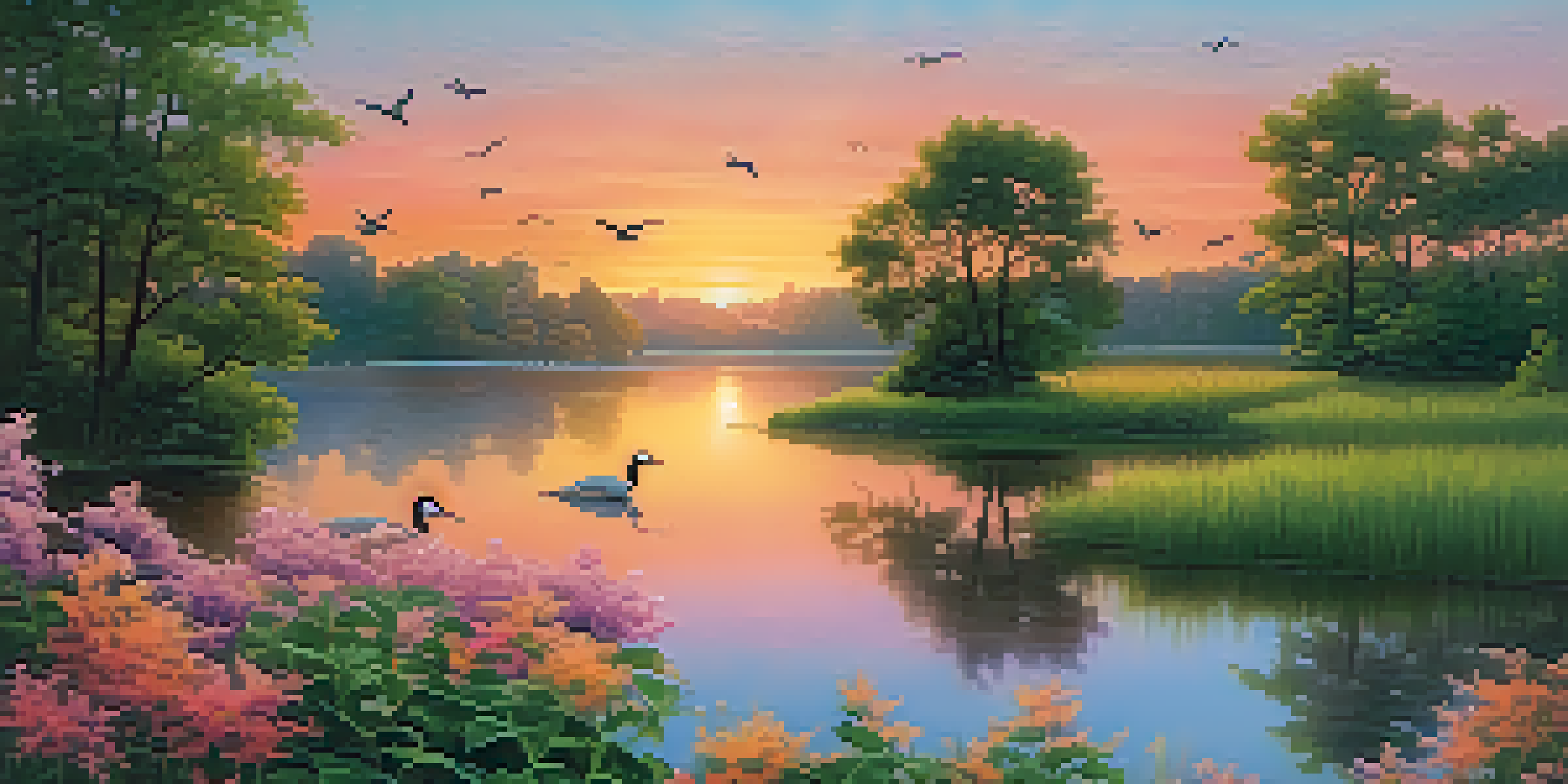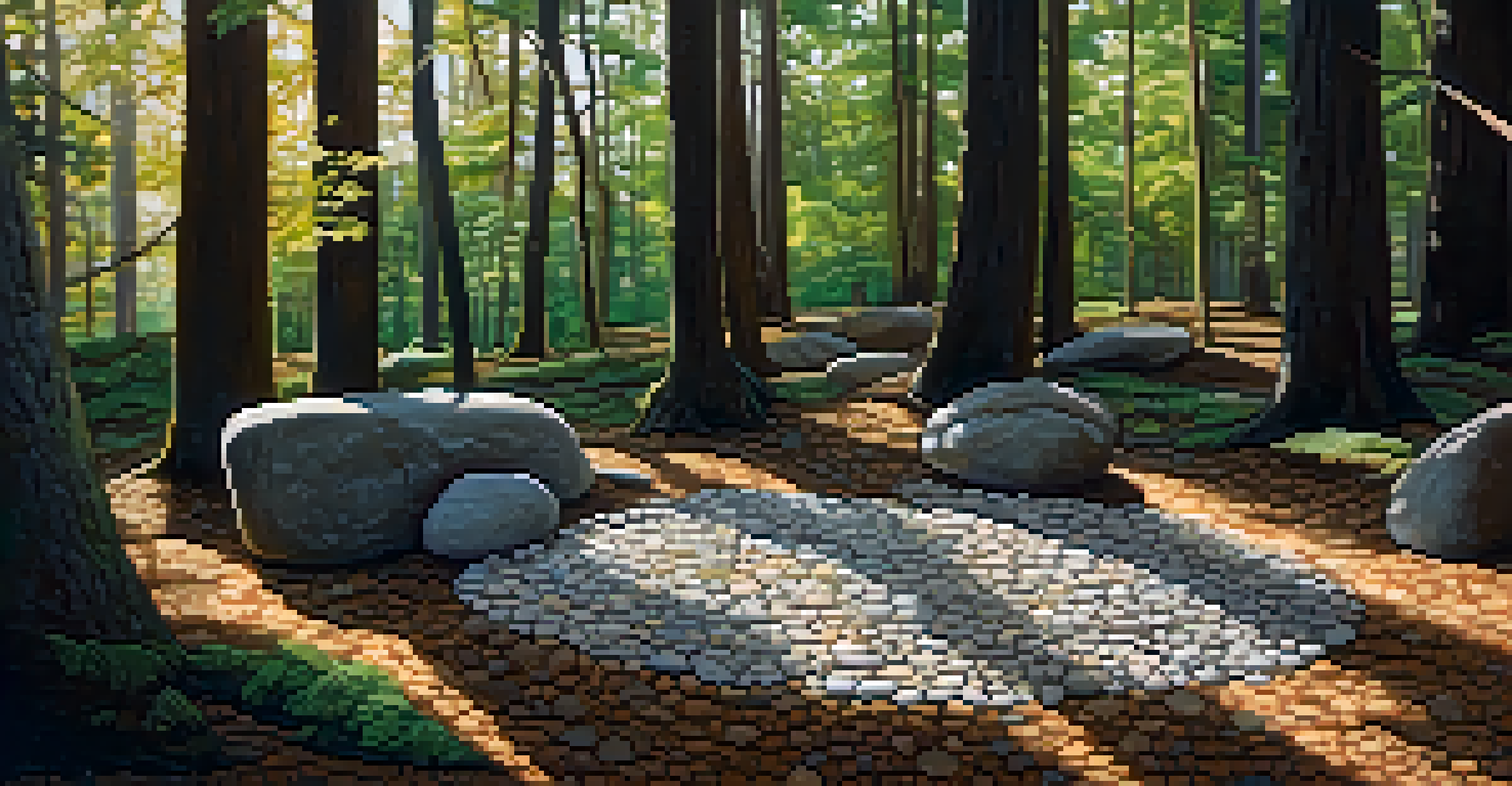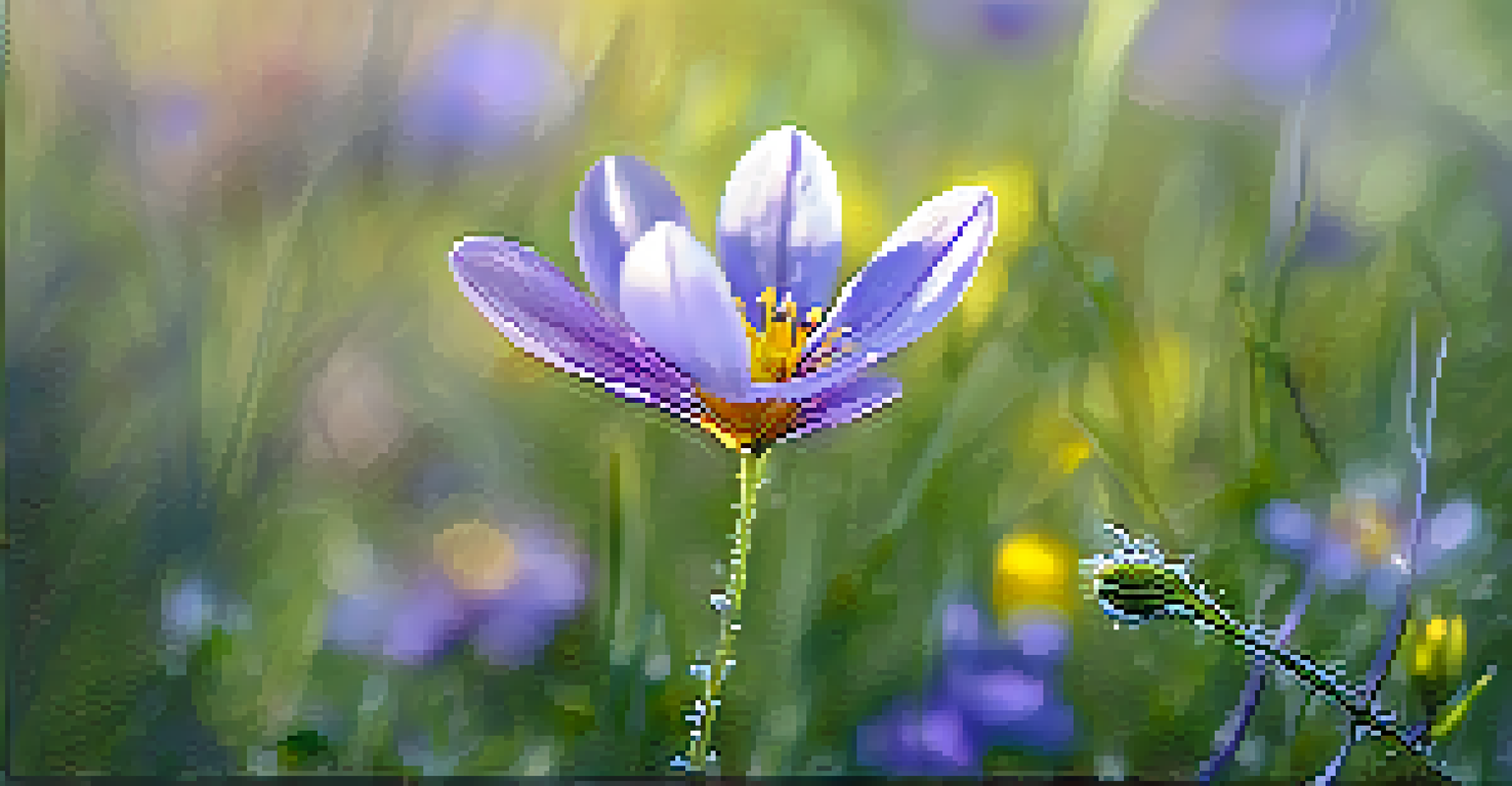Art and the Environment: Nature's Influence on Creativity

The Intrinsic Connection Between Art and Nature
Nature has always been a muse for artists, providing a seemingly endless well of inspiration. From the vibrant colors of a sunset to the intricate patterns of leaves, the natural world offers an array of visuals that spark creativity. This connection is not just a modern phenomenon; throughout history, artists have looked to nature to express their emotions and ideas, often reflecting the environment around them in their work.
Art is the most beautiful of all lies; it is the perfect illusion of life, which is also a nature of its own.
Take Claude Monet, for example. His series of water lilies captures the serene beauty of his garden, demonstrating how closely intertwined his art was with nature. Similarly, the Romantic poets used nature as a backdrop for expressing human emotions, showing how the environment can influence artistic expression across various mediums. This timeless relationship between art and nature allows artists to convey their thoughts and feelings in a way that resonates deeply with audiences.
In today's world, as we face environmental challenges, this connection becomes even more important. Artists are not only highlighting the beauty of nature but also raising awareness about conservation and sustainability. By drawing attention to the natural world, they encourage audiences to appreciate and protect it, further deepening the relationship between art and the environment.
Nature as a Tool for Creative Expression
The outdoors serves as an open-air studio for many artists, providing both inspiration and materials. Artists like Andy Goldsworthy utilize natural elements, such as stones and leaves, to create temporary installations that celebrate the beauty of the environment. Through these works, they capture the essence of nature while emphasizing the importance of preserving it for future generations.

Furthermore, the act of engaging with nature can enhance the creative process. Many writers and visual artists find that spending time outdoors clears their minds and ignites their imagination. For instance, walking through a forest or sitting by a lake can lead to epiphanies that transform into artwork, highlighting how the natural environment can serve as a catalyst for creativity.
Art Reflects Nature's Beauty
Artists have long drawn inspiration from the natural world, using it to express emotions and ideas that resonate with audiences.
This connection to nature not only nurtures individual creativity but also fosters a sense of community among artists. Workshops and retreats often take place in serene natural settings, allowing participants to draw from their surroundings while sharing ideas and inspiration. The collaborative atmosphere encourages artistic growth, demonstrating how nature can enhance both personal and collective creativity.
The Role of Environmental Themes in Art
Environmental themes have become increasingly prominent in contemporary art as artists respond to climate change and ecological degradation. Works that focus on nature's beauty often juxtapose images of pollution or destruction, creating a powerful narrative that calls for awareness and action. This duality invites viewers to reflect on their relationship with the environment and consider their impact on the planet.
The earth has music for those who listen.
For instance, artists like Olafur Eliasson use light and space to create immersive experiences that encourage viewers to rethink their perceptions of nature. His installations often highlight the fragility of the environment, making the audience more conscious of their surroundings. This blend of art and environmental advocacy fosters a deeper understanding of the challenges we face, making the message more accessible and engaging.
By intertwining environmental themes with artistic expression, artists can drive social change and inspire action. Their work often serves as a reminder of our responsibility to protect the environment, encouraging viewers to participate in conservation efforts. This powerful intersection of art and activism emphasizes that creativity can be a formidable tool for environmental awareness.
Healing Through Nature-Inspired Art
Art that draws inspiration from nature can have profound effects on mental health and well-being. Engaging with natural imagery can evoke feelings of peace and tranquility, helping individuals cope with stress and anxiety. Projects like nature therapy encourage participants to create art in natural settings, which can enhance their emotional resilience and foster a sense of connection to the environment.
Research has shown that exposure to nature can improve mood and cognitive function, making art produced in these settings even more impactful. For example, studies indicate that people who spend time in nature report higher levels of creativity and lower levels of stress. This connection between nature and mental well-being underscores the importance of integrating natural elements into artistic practices.
Nature Inspires Creative Growth
Engaging with nature enhances creativity, providing artists the clarity and inspiration needed for their work.
Moreover, art can serve as a medium for exploring personal experiences related to nature. Artists often use their work to process emotions tied to environmental changes or personal losses. By transforming these feelings into visual or written expressions, they not only heal themselves but also resonate with others who share similar experiences, creating a sense of community and shared understanding.
Cultural Perspectives on Nature and Art
Different cultures have unique relationships with nature that shape their artistic expressions. Indigenous cultures, for example, often view nature as a sacred entity, with art serving as a means of honoring the land and its resources. This deep respect for the environment influences their storytelling, crafts, and visual arts, highlighting the importance of nature in their cultural identity.
In contrast, Western art has historically oscillated between idealizing nature and portraying it as a resource to be exploited. The Romantic movement celebrated the beauty of nature, while the Industrial Revolution shifted focus to human innovation and progress. This complex relationship reflects society's evolving values and attitudes toward the environment and informs how artists respond to these changes in their work.
By embracing a more holistic understanding of nature, artists from various backgrounds contribute to a richer dialogue about environmental issues. Their diverse perspectives encourage audiences to appreciate the interconnectedness of all life forms and the importance of preserving our planet. This cultural exchange enriches the artistic landscape and fosters a greater appreciation for the role of nature in shaping creativity.
Technology's Impact on Nature-Inspired Art
Advancements in technology have transformed the way artists create and interact with nature. Digital tools allow artists to manipulate images of the natural world, blending reality with imagination. This fusion of technology and nature opens up new avenues for artistic expression, enabling creators to explore themes in innovative ways that resonate with contemporary audiences.
For instance, virtual reality (VR) can immerse viewers in breathtaking natural environments, providing a unique way to experience art. Artists can design interactive experiences that allow individuals to explore landscapes that may be endangered or inaccessible. This engaging format not only captivates the audience but also raises awareness about environmental issues in a powerful and memorable manner.
Art Drives Environmental Awareness
Contemporary artists are increasingly using their work to highlight environmental issues, encouraging audiences to take action for conservation.
However, the increasing reliance on technology in art also raises questions about authenticity and the value of traditional techniques. While digital art can broaden accessibility and reach, it’s essential to maintain a balance between the digital and the organic. By blending technology with traditional practices, artists can create multifaceted works that honor both the environment and the evolution of artistic methods.
The Future of Art and Environmental Consciousness
As we look to the future, the relationship between art and the environment will undoubtedly continue to evolve. With growing concerns about climate change and environmental degradation, artists are poised to play a crucial role in shaping public discourse. By using their platforms to highlight pressing issues, they can inspire action and motivate audiences to engage in environmental stewardship.
Emerging trends in eco-art and sustainability practices are likely to gain traction, encouraging artists to source materials responsibly and consider the ecological impact of their work. Collaborations between artists and environmental organizations can further amplify this message, creating a collective effort to address the challenges facing our planet. This synergy between creativity and environmentalism can lead to innovative solutions that benefit both art and nature.

Ultimately, the future of art and environmental consciousness is interconnected. As artists continue to explore the beauty and fragility of nature, they will not only enrich our cultural landscape but also foster a greater appreciation for the world around us. By encouraging dialogue and inspiring action, art can become a powerful vehicle for change, urging society to protect and cherish the environment.